A brief word on the Traffic Soyboys series. This was supposed to be finished sometime in January, preferably early in January. The problem is that the Traffic Troons are so wrong about everything that it’s difficult to force myself to not respond to something they say. I’ll try keeping that only to the most juiciest nonsense, and wrap the series up in the next ten days. That’s something of a tight timeline, but I think it’s doable.
Afterwards I’ll be turning the series into a few videos for YouTube and Odysee, like I did with my Rangz of the Kangz reviews, such as the one above. And then we’ll be moving forward to our prepared confrontation with Mr. Peterson. But before then we need to blitz through the rest of this. And I warn you, this entry has some real autism.
There have been a few pieces related to the Traffic Troons series that nevertheless didn’t make it into the series officially. The very last piece on this site, about Precision Scheduled Derailments, is right on the line of inclusion.
In short, no one can really define what PSR actually means, whether they be supporters or detractors. It seems like a mess of buzzwords and corporate newspeak designed to justify the raiding of rail corporations assets by wall street to boost short term profitability at the expense of long term viability, all while screwing over the workers in the meantime.
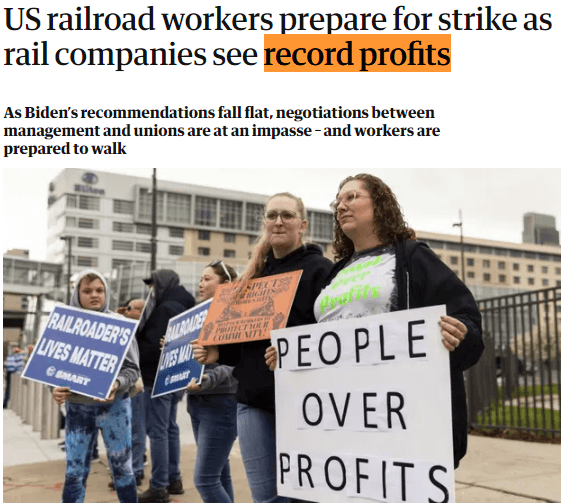
PSR has become synonymous with monstrously long trains in the eyes of people who work in the industry. This allegedly leads to a lot of problems, such as increased derailments. This is odd, since I’ve seen these traffic troons explain adding extra cars to the end of trains as a major advantage of trains. I’ve also seen these types of arguments.
There are really only two situations where [rail corporations] will actually upgrade or improve things.
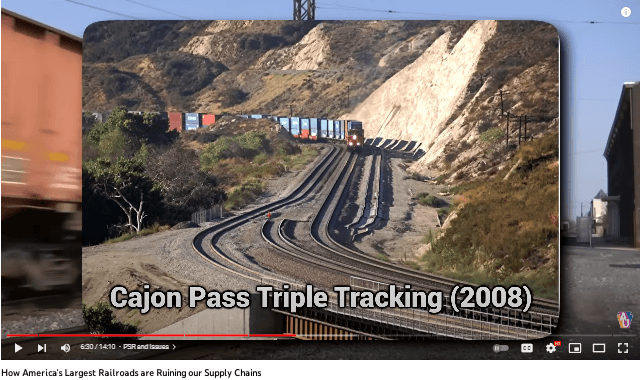
One is if there is an insane demand and they have a bottleneck for like a decade. This is what BNSF did with their mainline.
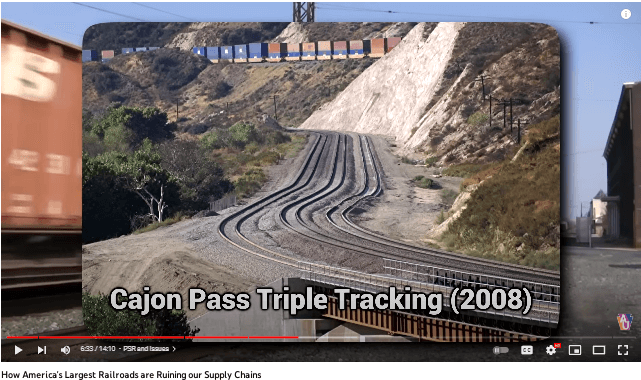
Fisher then shows this image of a BNSF line that was double tracked, before being made triple tracked about fifteen years ago. He describes this as a bottleneck, which was fixed with the addition of another line. This is sounding weirdly familiar for some reason…
Yes, it’s the same dipshit who made the above video. Apparently when it comes to roads there is infinite “induced” demand. But for trains there is very fixed demand that can be satisfied neatly with the addition of another line. Remember kids, “just one more lane bro” is what dumb dumbs say, but “just one more line bro” is hyperintelligent genius talk. You’re too dumb to get that this isn’t totally contradictory.
For now the strike has been averted as the federal government pushed for the companies to agree to some of the union terms, but I have a feeling that we’re going to see this again. We aren’t at the end of it, because the workers didn’t nearly get enough.

No, the federal government did not “push for the companies to agree to some of the union terms.” What they did was make it illegal for the rail workers to strike before giving them nothing but a yearly raise that doesn’t keep pace with inflation. The Biden Administration stepped in as judge, jury, and executioner in forcefeeding the working people of this country a shit sandwich, and fuck these antifa faggots for downplaying this garbage. I can’t stand this total kosher-partisan bullshit routine that these traffic antifas do, and the downplaying of just how absurdly one sided the bipartisan fucking over of the workers was while railroads are in the middle of record profits.
This is also the same Alan Fisher who is responsible for this awful video.
Below are some of the prescient insights this fag delivers after the point that I started the video.
Trains have the advantage of having low rolling resistance with their steel wheels on steel track. Trucks have high rolling resistance because rubber tires deform during operation.
According to CSX the average freight train can move up to four times the amount of goods as a truck can for the same amount of fuel.
When I first saw this video I thought I had misheard this man. After all, how could someone possibly use CSX, a rail corporation, as a reliable source on the efficiency of rail versus road freight?
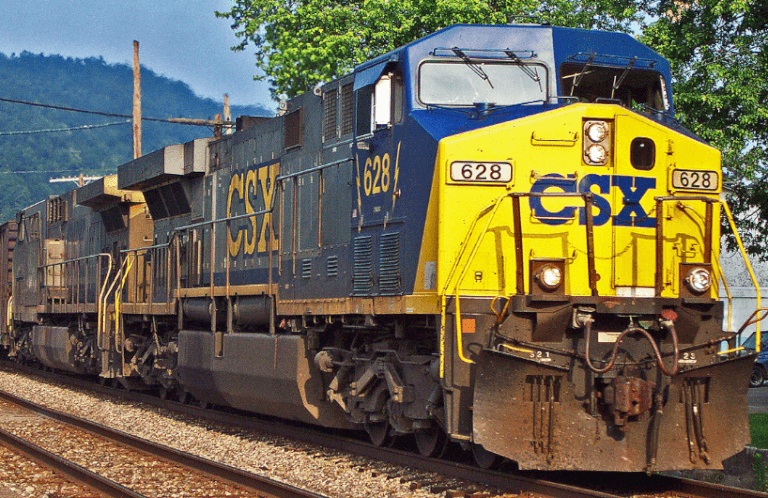
But no, there in the video description we see his sources.

And indeed, CSX is his source for the claim that trains are four times more efficient than the trucks that they compete against.

Sorry, up to four times more fuel efficient. That seems like wishy washy language, so I clicked on that link to see what rigourous scientific study CSX had commissioned in order to prove this claim.
CSX:
According to the AAR, moving freight by rail is 4 times more fuel efficient than moving freight on the highway.
Literally the very first words are “according to the AAR.”

What is with the traffic troons and doing this? If CSX is claiming that some other institution is the source for a claim, that doesn’t suddenly make CSX the source for the claim just because some midwit train fetishist read it on their webpage. We saw the exact same thing with the “muh automobile inefficiency” claim.
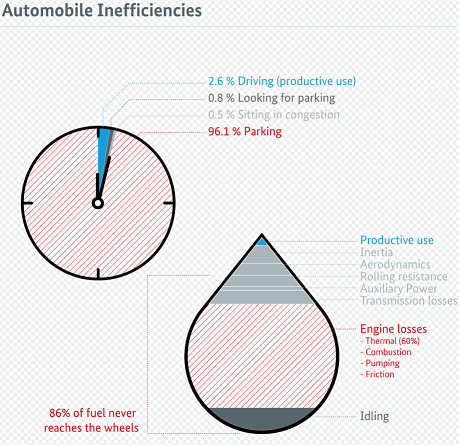

The source given was Wikipedia. Then Wikipedia gave two sources that were actually the same two authors writing the same thing in two different places. Then I found that they give two other sources for the claims.

This might not sound like much, but these are bizarre mistakes to make while adopting a tone of snarky intellectual superiority.
CSX trains can move a ton of freight approximately 492 miles on a single gallon of fuel. Efficient use of fuel means fewer greenhouse gas emissions for our planet. (Learn more at the Association of American Railroads’ website, http://www.aar.org/.)
I would like to learn more. Thanks CSX!
Association of American Railroads:
You may have noticed that I linked to the article, and then didn’t quote from it. That’s because CSX doesn’t link us to an article that proves the claim that freight rail is 4x more efficient than trucking. Instead, they hooked us up with the AAR’s homepage.

Also, the AAR is just a lobbying group for all the railroad corporations. It makes less than zero sense to take them at their word for their claims. But I wasn’t satisfied with that, so I hunted around on their website for proof of this claim, and finally found… an infographic.
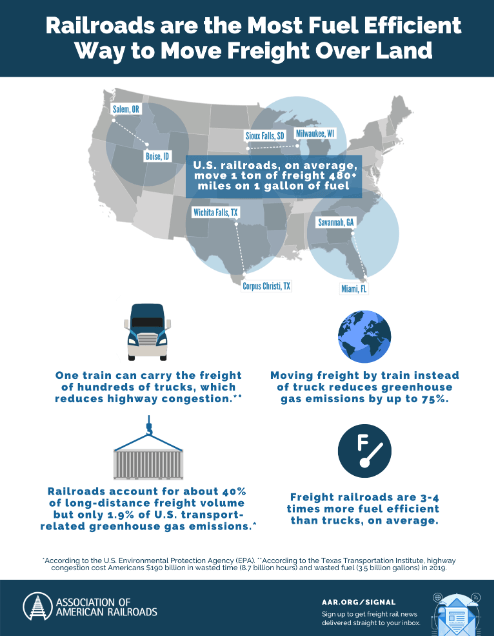
An infographic that, I might add, does not provide a source for the claim that railroads are 3-4 times more fuel efficient than trucks. It does provide sources for two other claims, with those sources being the EPA, and the Texas Transportation Institute. And by the way, they don’t bother giving any specific study or webpage for either. This is like sourcing a contentious scientific claim to “Physics, Quarterly,” instead of any specific paper.

It gets even more shoddy for the AAR. In a different page on climate change they link to a paper they wrote. Take a close look at the graph source on the right in this screencap.
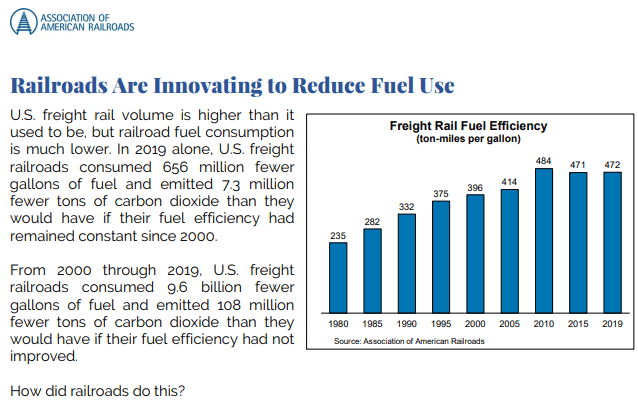
It’s literally the meme.

Do I think these numbers are based on something? Probably, but I can’t even begin to figure out what flawed methodology they’re using to come to this conclusion, because the industry lobbyist group doesn’t bother telling me. Although in fairness to CSX, they at least break out some back of the napkin calculations to “prove” their fuel efficiency superiority.
CSX:
The fuel efficiency for a freight truck can be estimated in a similar way. For example, a heavy-duty diesel truck hauling 19 tons of freight a distance of 500 miles would consume approximately 71 gallons of diesel fuel, assuming an average 7 miles per gallon truck fuel economy and a typical truck payload of 19 tons. The efficiency of this freight haul would be calculated as:
(19 tons x 500 miles) / 71 gallons = 134 ton-miles per gallon.
This efficiency might be stated as “a truck can move a ton of freight 134 miles on a gallon of fuel.”
Similarly, a typical train might haul 3,000 tons of freight 500 miles and consume approximately 3,049 gallons of diesel fuel. The efficiency of this freight haul would be calculated as:
(3000 tons x 500 miles) / (3,049 gallons) = 492 ton-miles per gallon.
This efficiency might be stated as “a train can move a ton of freight 492 miles on a gallon of fuel.”
In this example, the train is approximately 3.7 times more efficient at hauling freight, as shown by the ratio 492 train ton-miles per gallon divided by 134 truck ton-miles per gallon
Yes, the claim that freight rail is four times more fuel efficient than trucking is based on some circular logic by the AAR lobbying group and CSX’s back of the napkin calculations on their own website with a whole host of built in assumptions. This gets uncritically repeated by the traffic antifas, even though they swear that they hate the rail corps. Hell, they even up the claim to “four times as fuel efficient,” even though CSX and AAR find a number of “3.7x” and “between 3-4x” fuel efficiency per ton-mile respectively.

This is the rigorous scientific proof of the four times greater fuel economy claim that gets bandied about. I’m not even sure that this deserves to be debunked, but I’ll quickly point out that calculating the fuel efficiency of the train itself is misleading, since freight rail suffers from the partial trip problem except in extremely rare circumstances. You still need a host of small trucks to get the product to the real final destination, and are undoubtedly going further than a semi-truck doing point to point service. If you aren’t factoring that in then you’re just doing shoddy analysis that intentionally makes trains look more fuel efficient than they actually are, which everyone with a brain would anticipate a ****ing rail corporation to do. This isn’t science, this is marketing.
Also, unlike the traffic soyboys, I just flat out don’t trust CSX to give me accurate information on their own trains fuel economy per ton mile ratios. The same goes for the rail industry lobbyist group, the Association of American Railroads. But real anti-capitalists repeat rail corporation talking points on their uncensored YouTube channels while raking in the dough on their uncensored Patreon pages.

Anyway, after uncritically repeating the claim that trains are four times more fuel efficient than trucks, Fisher then concludes that trains are always the answer.
So, is the answer always trains? I don’t know for sure, but the numbers and the statistics sure seem to point that way.

I want to make it very clear that I’m sure that freight by rail is more fuel efficient than freight by truck when doing the types of jobs that rail is suited for. The actual fuel efficiency would depend on the specific job, and the entire logistics chain would be calculated. However, in the best case scenarios I could believe in something like four times greater fuel efficiency. I just bring this up because I wanted you to see the total lack of intellectual rigour that we are dealing with here.
In a future where we must reshape our shipping and statistics to lower our CO2 output towards slowing global warming, and if we want to build a more resilient logistics network against weather, switching from trucks back to trains is the logical answer.
Get a load of the weather resilience of this train, which stalls on a slight hill due to – from the video description – a “fine drizzle of rain.” Damn these freak weather events!
I bring the above video up because the urbanite, Alan Fisher, bloviated about the low rolling resistance of trains in the same video. Above we see a side effect of that low rolling resistance, actually rolling friction to be precise, which is the trains having no grip. But the traffic troons just reframed low grip into a good thing, because grip is totally never important for anything. Train wheels are really slippy, and not only is that good, that’s what makes them superior to the filthy automobiles.
I’m not kidding when I say that their worldview is Trains == Good, Trucks == Bad.
It seems like every quarter, or every half a year some new grift scheme for transportation logistics comes out, sometimes even from Tesla themselves. But at least this time they admit that trains are superior, but in a really roundabout way.
Of course we here are not about to get Finked into thinking that trains are bad. They are a form of transportation with strengths and weaknesses. What we will do is put the kibosh on this bizarre fetishization of rolling friction, usually misrepresented as rolling resistance.
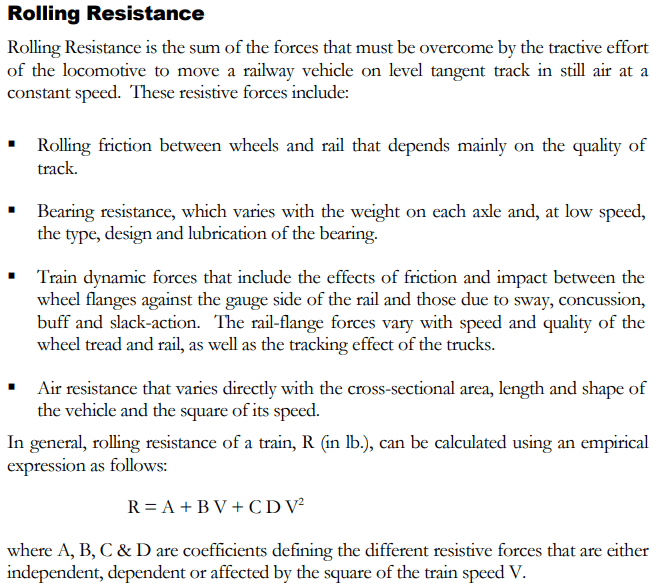
The above screencap is from this interesting paper by Arema. Some definitions of rolling resistance remove the wind resistance, which is reasonable. What’s not reasonable is hyperfocusing on the non-sequitur that lower friction between steel train wheels and steel track when compared versus rubber tires and pavement. This is not the entirety of the friction, and trains are not exactly gliding along like figure skaters on ice compared to the filthy trucks which are stuck like deer in mud.
None of the traffic troons seems to bother quantifying exactly how much lower the rolling resistance for trains actually is, let alone when adding back in wind resistance. That would require real effort, and the number would depend on a whole host of different factors, including the length of the train.
We know that the best number the railroad corporation shills can come up with for the fuel efficiency advantage is four. This is due to a combination of lower rolling resistance, amortized wind resistance due to long trains, and amortized fixed costs, such as the weight/drag of a locomotive, which decrease with the length of the train.
(0:43) The steel on steel friction of railroad wheels riding on steel rails is much lower compared with the rubber on road friction that trucks have to contend with.
And many of them outright get it wrong, such as the above. Rubber tires face losses due to hysteresis, a problem that steel wheels don’t face. Alan Fisher is a moron, but at least he got this one right.
But this somewhat misses the point of a wheel, which is only partially to have the absolute lowest rolling resistance possible. We also want our wheels to provide enough grip to allow our cars to turn, accelerate, and decelerate. Rubber tires, especially when filled with air, deform and spread out over the surface. The more tire we have touching the surface, the more grip, whether that be steel or rubber.
That’s why racecars have enormous wheels, especially for the rear wheels. The traffic troons would look at the below picture and conclude that the wheels were bad because they weren’t made of steel, which provides for less friction. But they are good because they are high grip, with the increased rolling resistance being essentially irrelevant.

But have they tried running on low friction steel tires? Seems pretty dumb having all that rubber dragging you down.
That’s why we make tires from rubber, FFS. It’s not because it’s cheaper. We could build steel automobile wheels for cheap. Hell, you kind of already have to do that for the tire rim. But then, at great expense, we add an inflated rubber wall around it. We do this because it is better than this.
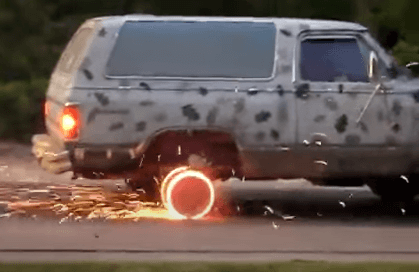
For the record, I searched for a long time for a picture of a car running on steel wheels. I thought I could find something on a car running on rims, but none of the photographs worked out. Above is the best I could find, because “low friction” steel wheels on a car is such a preposterously stupid idea that no one would make that intentionally, and no one online made it as a joke either.
This is not to say that lower resistance due to steel wheels is bad when you don’t need the extra grip. But hyperfocusing on steel wheel’s lack of hysteresis and lower coefficient of friction without explaining the downsides of having extremely low grip is bizarre. But if they admitted that rubber wheeled automobiles have about an order of magnitude or two more grip – hard to precisely calculate of course – then they might have to explain the advantage of that. And remember folx, cars bad, trains good. Therefore grip == irrelevant.
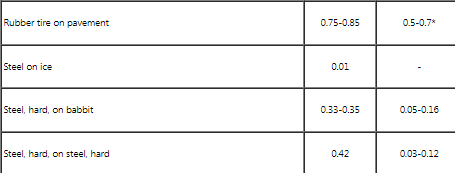
Engineers Edge gives us the above coefficient of friction numbers for rubber on pavement at the top, and steel on steel at the bottom. The first number is when dry, the second number is when wet. Tire design makes calculating the grip loss more complicated in wet conditions, but it is generally accepted at around 20%, assuming wet weather tires are installed.
Steel goes from somewhere between one quarter to one twelfth of the “gripiness” in wet weather. Trains have sand dispensaries to put on the tracks to get that extra bit of grip, which they may need even on dry track. Below you can see a locomotive dispensing sand just to get started in dry weather.
Interestingly, I found the coefficient of rubber on ice on a page on Hyper Textbook. While tire design is no doubt complicated, for the same surface area you can expect that railroads when wet are even more slippery than rubber tires on ice.
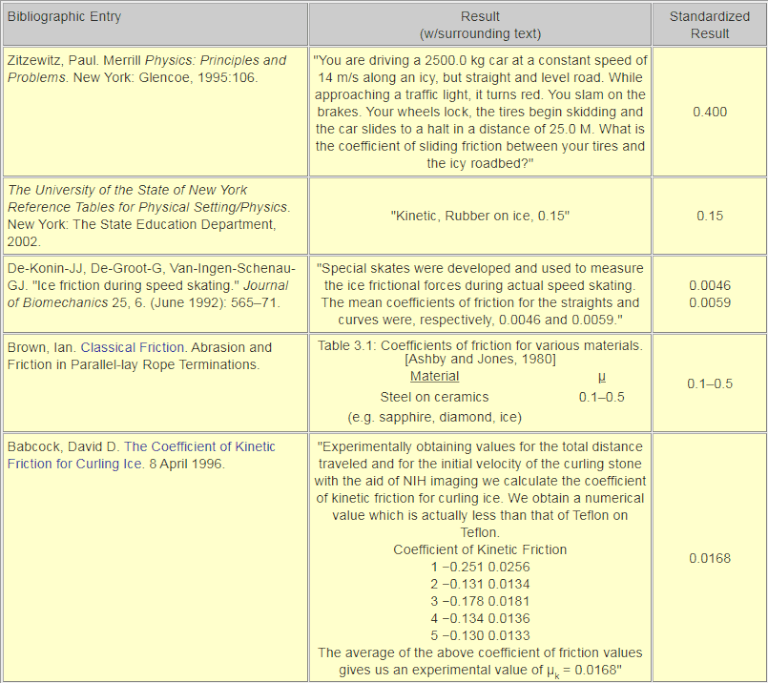 But that’s just the thing, for the same surface area will never be true. Remember that F1 car pictured above with it’s gigantic wheels? They want the fat tires precisely because they have more surface area. Skinnier tires will have lower contact patches. And steel wheels on steel rails have tiny contact patches.
But that’s just the thing, for the same surface area will never be true. Remember that F1 car pictured above with it’s gigantic wheels? They want the fat tires precisely because they have more surface area. Skinnier tires will have lower contact patches. And steel wheels on steel rails have tiny contact patches.
(1:00) Each wheel touches the rail in an area smaller than a dime. So that for a train with a hundred cars, eight hundred wheels are touching an area approximately the size of a school desktop.
And this isn’t just some random video either.
A single contact patch between the wheel and the rail is typically the size of a small coin.
Since I’m doing back of the envelope calculations, Wikipedia should be good enough. According to them, the average contact patch of a steel wheel on a rail is about 252 mm^2. For rubber tires calculating the contact patch is very complicated. But a cursory glance online gives us a number of 4,200 mm^2 per tire, about 16.8 times more area. Assuming that the steel wheels are half as grippy per square area in dry weather, and one tenth as grippy in the wet, our average car tire produces between 33.6 and 168 times more grip than a train’s steel wheel, depending on the conditions. Oh, and they’ve got four of them.

But of course locomotives have more than one wheel as well. That way they can do the train equivalent of a burnout – which is pretty lame honestly – with a dozen wheels at the same time.
To my eye the CN Pacific train pictured below has twelve wheels. Unfortunately, we can’t just say that it therefore has 1/11.2 and 1/56th the grip of a normal car, because weight increases grip.

See the rear wing on the F1 car below? That provides downforce, which increases the grip of the wheels with increased simulated weight. It lets the car “pretend” to be heavier than it is.
 The car will weigh around 4,000 lbs. The locomotive, around 300,000 lbs. Since the locomotive does not only push itself, more weight providing more grip is a good thing, within reason. Since the train is pulling cars which themselves have low friction steel wheels, on a perfectly level area, it does not need an impossibly large amount of traction to get started.
The car will weigh around 4,000 lbs. The locomotive, around 300,000 lbs. Since the locomotive does not only push itself, more weight providing more grip is a good thing, within reason. Since the train is pulling cars which themselves have low friction steel wheels, on a perfectly level area, it does not need an impossibly large amount of traction to get started.
However, it will still be traction limited when starting. That’s why trains don’t exactly take off like rocketships.
Yes, the title of that video is “fast log train acceleration.” Because for a train, a 0.5 kmph/s acceleration is just out of this world.
Above we see a passenger train with a top speed of about 200 kmph. This man sat on the train and recorded it’s acceleration.

This absolute BEAST manages to accelerate to the inhuman speed of 30 mph, or about 48 kmph, in just 25 seconds.
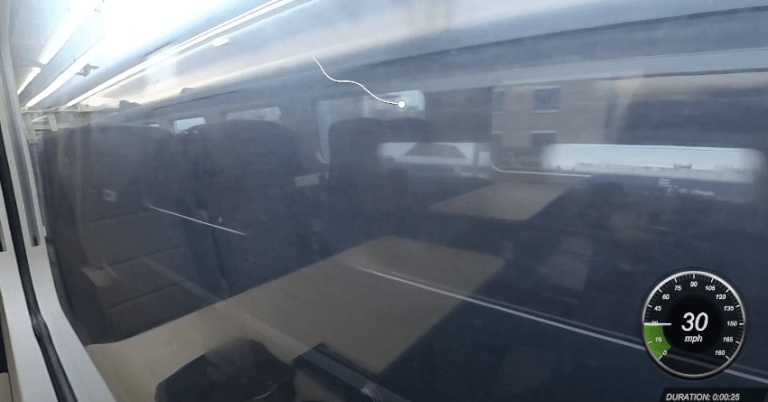
Try doing that in your car you fucking carbrain.

This monument to human ingenuity flies past the 0-60 mark in just 62 seconds, an almost unbelievably fast 1mph/s acceleration rate, if we’re being charitable. Some cARbrAiNs have said that babies have crawled faster. Our fact-checkers at Snopes tell us that babies only crawl at around 2 kmph, so this is false.

F1 car, just cause.
The weight of the train is relatively unimportant when on flat ground, as long as we are allowed to take a very long time to accelerate. The same cannot be said for inclines. When going up a gradient the weight of the cars being pulled begin to gravitationally pull on the locomotive. This effect increases with the gradient.
Cars, with their rubber wheels and relatively low weights, can manage inclines of roughly 10x greater vertical gradients than trains. Now sure, there may be some specialty type trains that might be able to manage steeper inclines than 3%, but they’d have to make increasing sacrifices to their payloads in order to accommodate that, which would limit the advantage of the train.
James May made that video about how trains “can’t” go uphill. He of course admits this is an exaggeration. And it is likewise an exaggeration to say that trains can’t stop and start, of course they can. But trains are about an order of magnitude worse at stopping, starting, and going up hills as compared to automobiles, at best.
A BRIEF LOOK AT TORQUE, HORSEPOWER, AND TRACTIVE FORCE
Trucks must take steep hills at lower speeds. However, they will be able to take them. This is because, for the same horsepower, the torque goes up as the speed goes down. Internal combustion engines make this hard to understand, since they also have their power output dependent on the RPM. The truck I used to drive has 18 gears for this reason.
Luckily, electric motors make the torque/speed relationship much more clear.
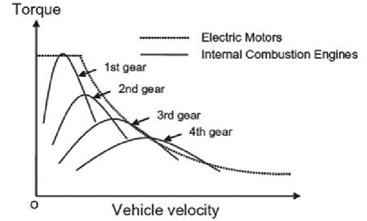
Electric motors have “back EMF” which makes the torque constant for a short period of time. Don’t ask me to explain. Also, the graph is slightly off.
For a stark real world example of this, let’s take a look at a mine corporation owned “road train” slowly making its way up what is a not particularly steep hill.
That was a hill so short and with a grade so mild that it’s probably unnamed. Despite this the truck slowed right down, so as to be higher on the torque curve, at the expense of slower speed. If we imagined a truck that was somehow glued to the side of a mountain so it wouldn’t fall off, it would need to balance its own weight in torque into the mountain.

This, but a truck.
In the absence of losses and with perfect traction this could be done using gearing. That’s how people can uproot big trees with small ATV’s. Watch the video below at 2x speed and compare the distance the ATV moves with the distance the tree moves.
And for an even shorter explanation of leverage made for a child, watch this.
As an aside to this aside, electric vehicles need at least the gearing to reduce the speed at which the motor turns, lets say 20,000 rpm, to the speed at which the wheels turn. If you want the car to have a maximum speed of 180 kmph (50m/s), then with 0.5 meter long wheels the rpm of the wheels would be spinning at 1,910 RPM.*
*For those curious about the math. The distance the wheel travels for one rotation is its circumference, which is PI * diameter. In this case that’s 3.1415 * 0.5 meters, or about 1.57 meters. At a speed of 50 meters/second, the rotations per second equate to (50m/s) / (1.57m), which works out to 31.85 rotations/second. To get to minutes we just multiply by 60s/minute, to get 1,910 RPM, rounding upwards.
This is not a problem, since we can just use a reduction gear that rotates a little lower than 1/10th the speed. However, for an electric truck, like the Tesla Semi, we might want more low end torque. In that case we just use a reduction gear that is, say, twice times as large, and we have twice the torque for any given speed, but a max speed of 90 km/hr.
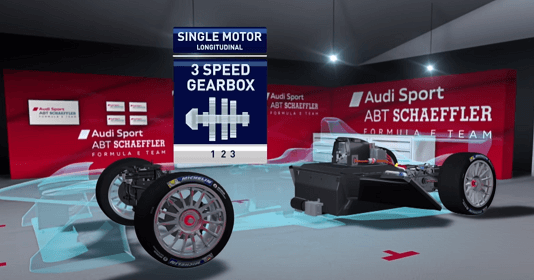
It is a common misconception that electric cars don’t have gearing beyond the reduction gear. Occasionally this is true, but all electric trucks, and some high performance formula E racecars, need a few gears to max out their performance.
When looking over the details of the electric trucks that have been announced so far, you may notice that the transmission specs aren’t what you’re used to seeing—rather than the typical 18-speed transmissions, electric trucks tend to use two-speed transmissions, with some using three or four. So why is that?
Below is what a theoretical electric truck torque output would look like with two gears. The first gear is used to get to about 25 km/hr, and has four times more torque when stopped. The second gear is used for everything else, and starts producing more torque around 25 km/hr. Technically you could use elementary school intersection of two lines math to find the exact crossover point, but I’m sure you get the gist of it.

Velocity mislabeled. I meant 120 km/hr.
Again a lot of confusion stems from the practical limitations and quirks of internal combustion engines. Electric motors need gearing just like any other motors, but they don’t need as much because they don’t suffer from the same narrow band of effective torque relative to RPM.

But the reason that was an aside is that gearing, and leverage more broadly, cannot help you if you are grip limited. There is a certain maximum amount of torque that can be put through the tires of any particular vehicle in any particular setup. Put any more torque and you’ll just burnout.
I have firsthand experience with this when trucking. Below is the Coquihalla highway in British Columbia. I once had to stay on a certain point overnight in my truck, because it was deemed too icy to let anyone go up the hill, even with chains on. That is the maximum elevation gradient part, which is about 8.5%.

That means every 100 feet you’ve risen 8.5 feet in elevation. Normally I’d take the hill around 40 km/hr, assuming a full load. But with ice it doesn’t matter how slow I would drive, since the wheels simply do not have enough traction to maintain the weight of the vehicle. No amount of engine power will help you here. Installing a nuclear reactor to drive the wheels won’t help, we are traction limited. The only thing that would help would be more wheels.
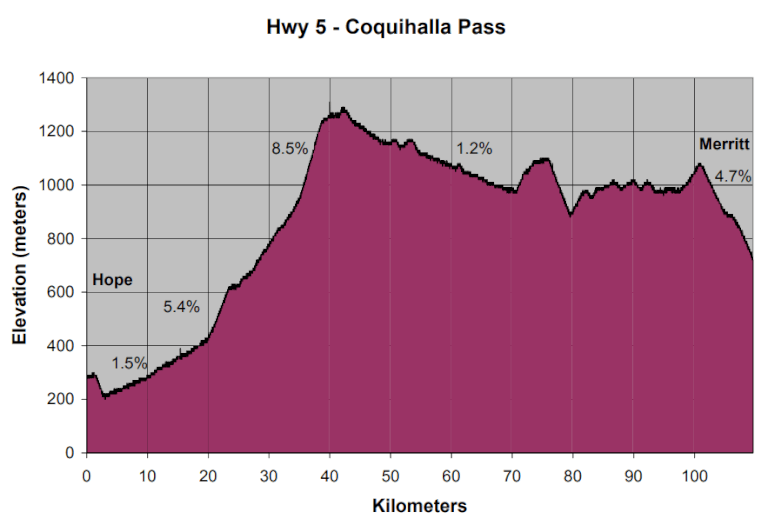
All of this is a very long way of making what should be a very obvious point. Yes, if you are not limited by grip, having the lowest rolling resistance possible is good. Even then, trains still have to overcome bearing resistance, which increases linearly with speed, and wind resistance, which increases with the square of the increase in speed. The most ambitious fuel economy claims of trains versus trucks, made by the lobbyists themselves, is almost four times better.
I say all of this, these many thousands of words, to put into perspective the utterly contemptible quotation of urbanist midwit Alan Fisher that I showed earlier in the article.
Trains have the advantage of having low rolling resistance with their steel wheels on steel track. Trucks have high rolling resistance because rubber tires deform during operation.
…
So, is the answer always trains? I don’t know for sure, but the numbers and the statistics sure seem to point that way.
Remember the very first entry in this series? The one where we took down this video of a guy proposing we actually ban cars?
I’m starting to think that’s a very realistic proposition. We should totally ban them, then replace all of the jobs they do with with vehicles that have, in the best case scenarios, an order of magnitude worse stop, start, and hill climb performance. Then we’ll build some skyscrapers everywhere for no reason because muh density.
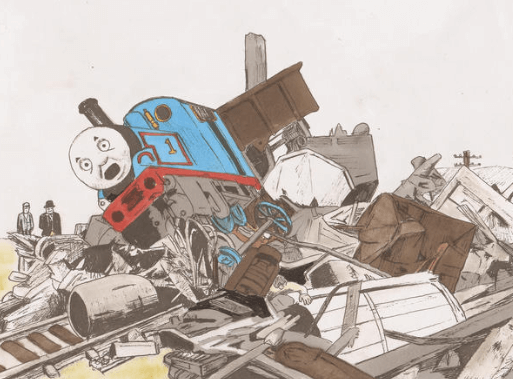
The skyscrapers everywhere part comes next.
UPDATE: Grooms in the comments points out one automobile that does have steel wheels – or aluminum, which is close enough – the Bloodhound SSC land speed record holder.

The reason for steel wheels is because the motive force comes from the giant jet engine on the top of the car, and it has almost no ability to steer. And finally, they chose steel not for low friction, but because different material would have torn itself apart due to the inertial stress.
So there you go. If you want a car with steel wheels, all you need is one that has no real ability to steer, a giant rocket engine providing the thrust, and a lifespan that exists purely in the Mojave Desert. For everything else, there’s rubber wheels.

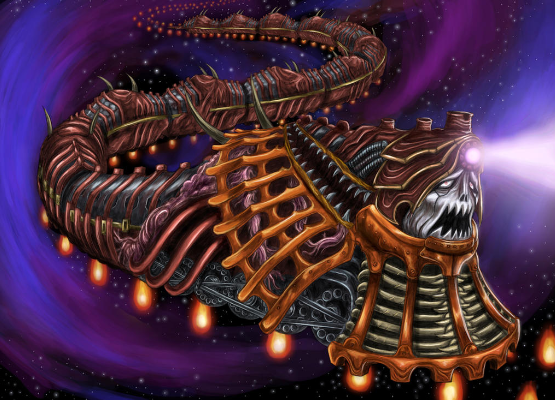

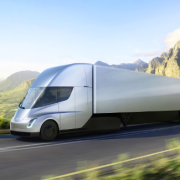


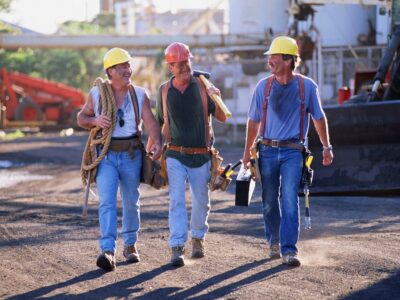







Honestly the biggest indictment on railroad companies is that trains are ONLY 4 times more fuel efficient than trucks. as a rule for two engines at the same level of technology. The larger engine is always more efficient in converting energy into momentum.
For chemical engines, the bigger the engine the bigger the piston and longer it has to travel.
For electric engines. the bigger they are the more that the electricity has to ‘grip’ onto the magnets that run the crankshaft.
For both engine type it means more room for a transmission.
From the top of my head, what I have heard from fellow train autist is that the biggest crime of train companies is not upgrading their trains to the latest technology. every train car and engine is used till they fall apart. which in general is the problem with all western infastructure
https://youtu.be/mPshhkYpCBY Their are all metal aluminum wheels but those are used by vehicles that are using jet engines to be the fastest car in the world. that is in very specialist high performance cases thou
Another part!
Oh bliss! Oh bliss and heavens!
https://www.youtube.com/watch?v=09EWchLSeH4
I hope this series of articles continues.
There is one mode of transportation that has zero rolling resistance and the only friction it faces is wind resistance. They have great acceleration and deceleration for their size, weight and speed. So because of that they must be more fuel efficient than trains and especially those smelly old trucks?
Let’s run CSX’s equation for this wonderful miracle mystery long hauler.
(200 tons x 500 miles) / 8000 gallons = 12.5 ton-miles per gallon.
Maybe 747s aren’t better in that regard.
That’s a good point. Even with no rolling resistance planes generally have much worse fuel economy per ton-mile.